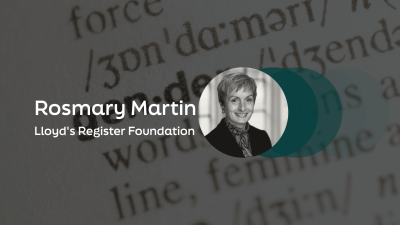
Improving access to redress for workers vulnerable to violence and harassment in South Asia
Experts discuss the factors that make some workers more vulnerable than others to violence and harassment.
This page is approximately a 3 minute read
This page was published on

6 October saw the publication of the Lloyd’s Register Foundation World Risk Poll. In this, the world’s largest survey into how people think and feel about risk and safety, we find some startling information: facts that demand immediate action and findings that demand further research. The information is rich and wide-ranging: from hard data on experience and perceptions of severe weather risk to heart-breaking stories such as the abduction of a vulnerable girl snatched off the street in Mexico.
With data collected from 150,000 people in over 140 countries and territories, the survey throws light on previously unrevealed information.
For me, the data that is most compelling is the information on women and risk. At the time of the survey, which was undertaken before the COVID-19 pandemic, fewer women than men felt their lives were safer in 2019 than they were five years before and 27% of women across the globe felt less safe than they did five years previously.
It is perhaps not surprising that in most regions of the world more women than men named crime and violence amongst their greatest sources of risk when asked about their top of mind concerns. But what is worth pausing on is the revelation of the size of the gap between men and women. For example, in Australia and New Zealand 34 per cent of women named crime and violence as a risk, 18 percentage points above their male counterparts.
The survey also shows that in some countries as many as 75 per cent of female workers are concerned about violence and harassment in the workplace. Even in high-income economies where strong regulation of workplace safety is typical, significant concerns about violence and harassment were recorded in many countries, with figures ranging from just 3 per cent of female workers in Singapore to 42 per cent of Finnish female workers.
The survey also discloses interesting differences in the way men and women view risks that are common to us all. Almost 70% of people worldwide recognised the threat from climate change in the next 20 years. While men and women are about as likely to believe climate change represents a ‘very serious’ threat to people in their countries in the next 20 years, men- particularly older men - were more likely than women to say that climate change is ‘not a threat at all’.
The Lloyd’s Register Foundation World Risk Poll has been undertaken because a better understanding of how people perceive and experience risks will help communities, researchers, safety professionals and policymakers engineer a safer world. The Poll will be repeated in 2021 and it will be fascinating to see how issues such as trust in government, perception of personal safety and what worries people most will have changed.